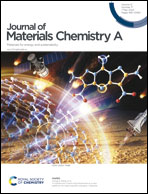Radiative cooling: structure design and application
Abstract
Refrigeration technology plays a critical role in various aspects of daily life and industrial production. However, traditional refrigeration methods consume substantial energy and cause environmental pollution, hindering their ability to meet future refrigeration requirements. Radiative cooling as a refrigeration technology that does not require an external energy input has garnered significant attention owing to its energy-saving and environmentally friendly characteristics. In recent years, substantial advancements in radiative cooling technology have been made, ranging from improved cooling capacity to enhanced control over cooling effects and increased durability. Presently, radiative cooling technology has matured to the point where its practical applications have become feasible. Herein, we provide a comprehensive overview of radiative cooling technology, covering its basic principles, various design structures, and potential applications. Additionally, the current challenges associated with this technology are highlighted, aiming to offer essential suggestions for its future progress and improvement.

- This article is part of the themed collection: Journal of Materials Chemistry A Recent Review Articles


 Please wait while we load your content...
Please wait while we load your content...